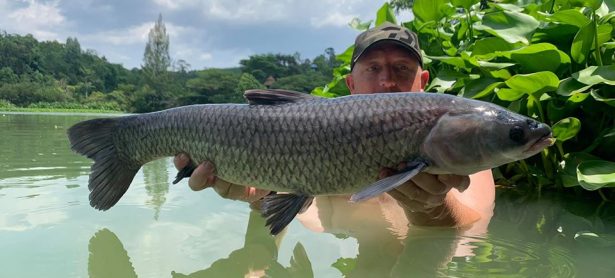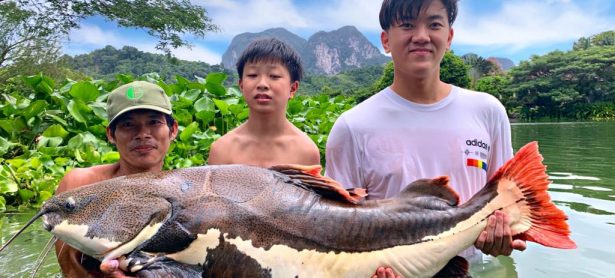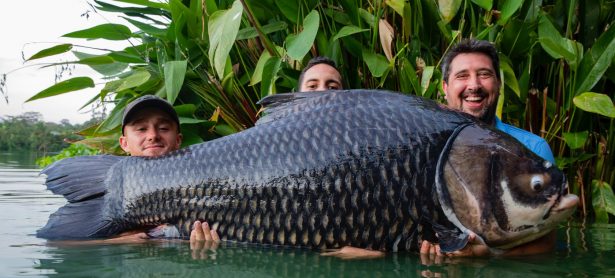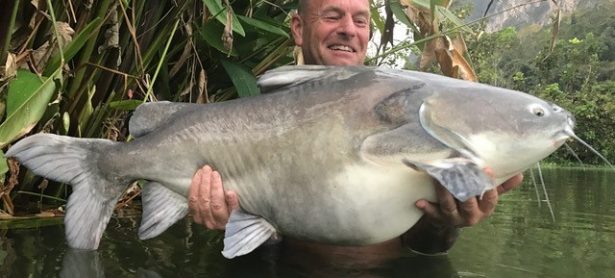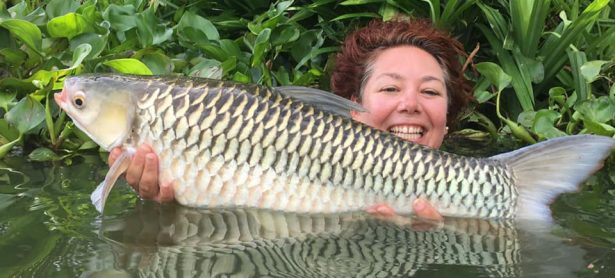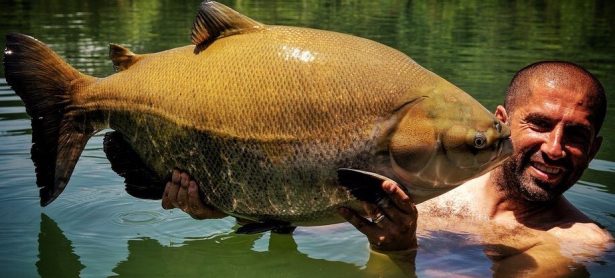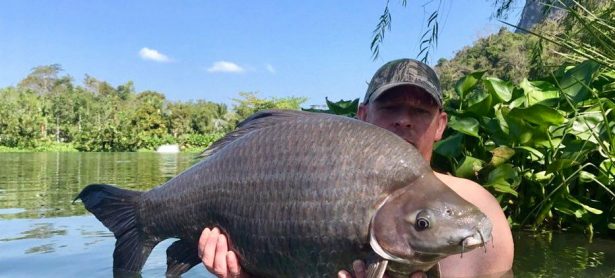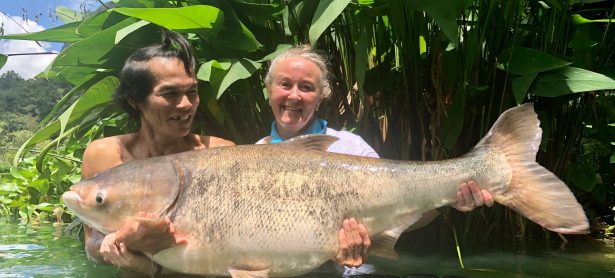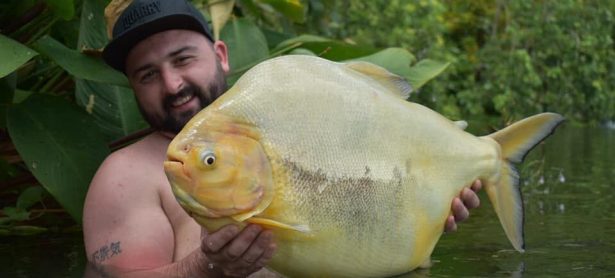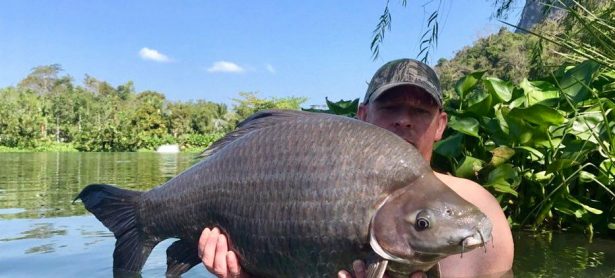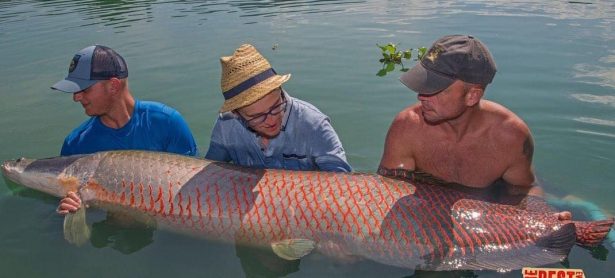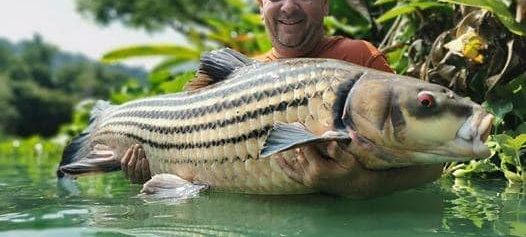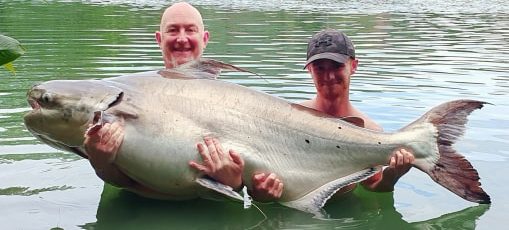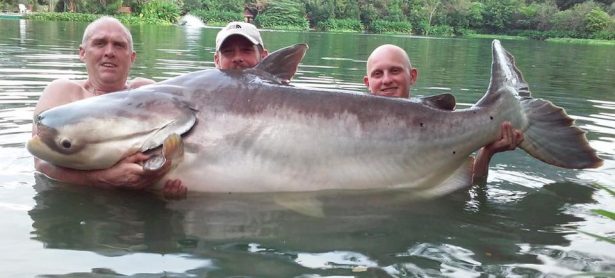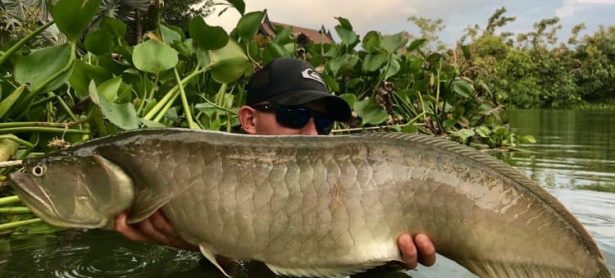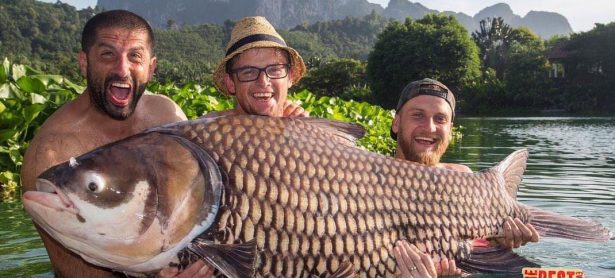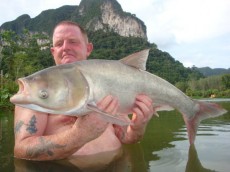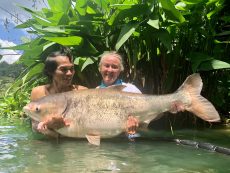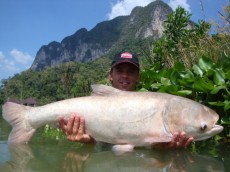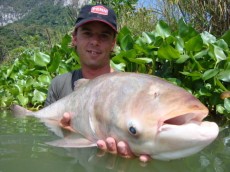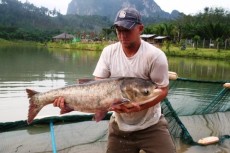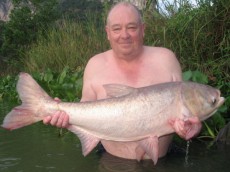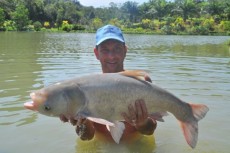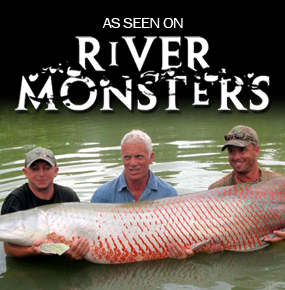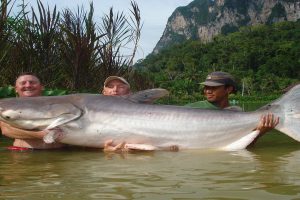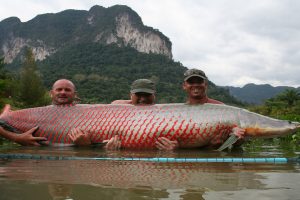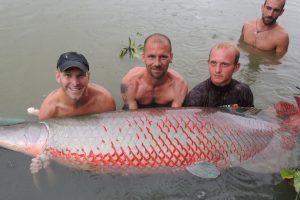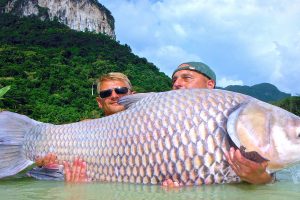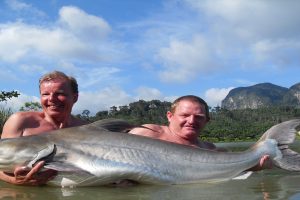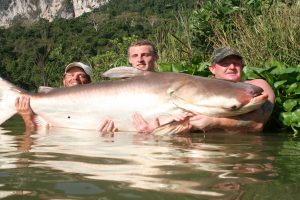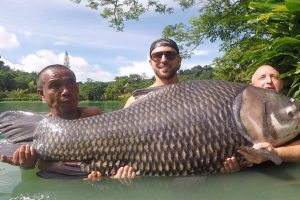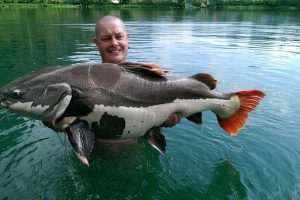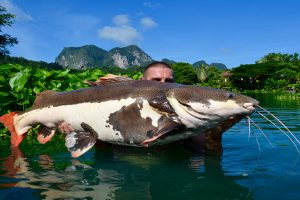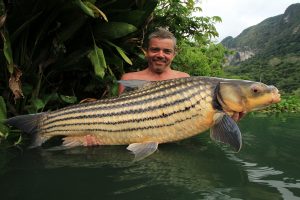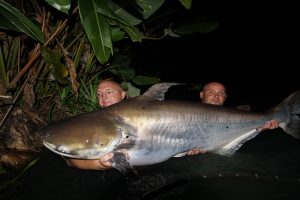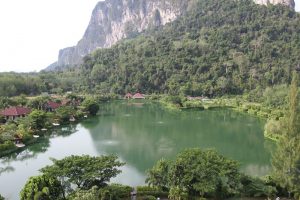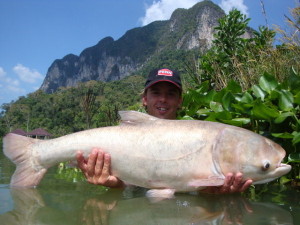 Name: Big head carp.
Name: Big head carp.
Species: Aristichthys nobilis.
Thai name: Pla tjin.
Max length: 1.5m.
Max weight: 45kg (100lb).
IGFA record: 90lbs.0ozs-40.82kgs.
Diet: Water plants, banana, vegetables, insects, shrimp, pop ups and boilies.
To fish for our big head carp we suggest you float fish close to the water hyacinth beds. As with all our carp species, maize is the top bait, although banana has been sorting out the better specimens lately. Big heads will also take boilies, especially in fruit flavours. Occasionally big head get caught on the plateau at the shallow end of our lake. They do not seem to like resistance, hence float fishing. Big head do not mix with the other species in the lake; they seem to prefer each other’s company. The Chao Phraya catfish in our lake bully the big heads and kill them, which makes them seek the margin weedbeds for cover.
They are not great speedsters when hooked; they go on long, steady runs staying close to the bottom. All through the fight they will keep trying to get under the weed, but don’t worry, as none of our weed is rooting – the hyacinths are a floating weed used as a natural filter, so when a fish goes under the weed just sink the rod tip until you can get them away and into open water. The big head has no spikes or dangerous areas, but they do flip a lot when you hold them for a photo. For their own safety keep your hands away from their gills. They do not require any injections or special care, so when the photo is done support them in the water until they are ready to swim off.
General facts on the big head carp:
The big head carp originated from China, but has rapidly spread throughout Asia and beyond. They are now distributed nearly globally through 70 countries, and they have reached pest proportions in the Mississippi river basin. Big head carp favour warm rivers; in the wild they prefer to feed on zooplankton, but as a lot of farmed fish they can be converted at the fry stage to eat other food items. The big head carp lives in large rivers and lakes in its native China. Although it will thrive in lakes and ponds, it must spawn in flowing water. Big head carp spawn in flowing water with a strong current, such as lake outlets, behind sandbars, stone beds or islands, and spawning is initiated by heavy rains. The eggs are released in a heavy current and a given no parental care. These fish grow slowly to start with, but once over two years old they grow at fantastic rates. As its name suggests they have a big head in relation to their bodies.
They are covered in very small scales except for their heads, which are smooth. Big head are a mottled brown with green tinge on their upper body, changing to a grubby silver flank and a creamy brown belly. They have large eyes and a smiling type mouth; in fact big head do not resemble a normal carp species. Throughout Asia they are a very important aquaculture fish, and with their fast growth rate and firm flesh they make a highly profitable market fish for the table. Big head were originally introduced to the USA to remove excess plankton in sewage treatment plants. From there they escaped into the Mississippi River where they quickly established themselves. In New York, Missouri and Illinois it is illegal to be in possession of live big head carp. Already in the USA it is too late, as the big head are taking over river systems and dams, but as Gillhams is an enclosed lake they will never spawn here.



